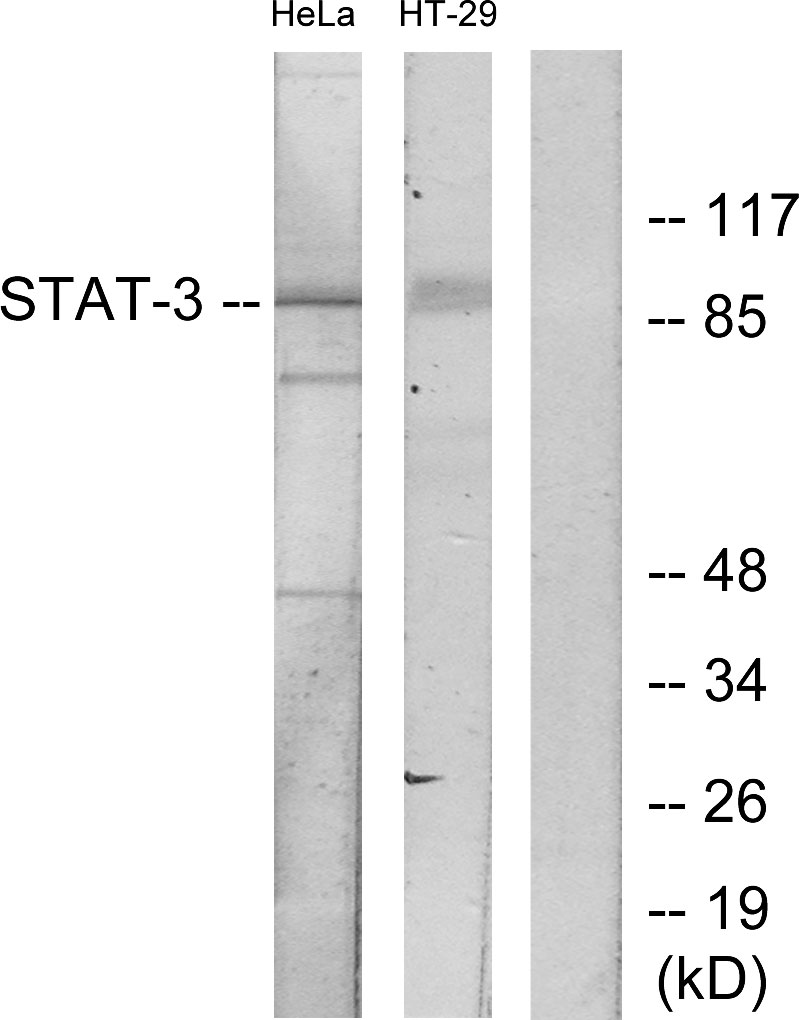![STAT3 / Signal Transducer and Activator of Transcription 3 (STAT3/2409), CF405S conjugate, 0.1mg/mL [26628-22-8] STAT3 / Signal Transducer and Activator of Transcription 3 (STAT3/2409), CF405S conjugate, 0.1mg/mL [26628-22-8]](https://biotium.com/wp-content/uploads/2018/10/BNUB2409.jpeg)
STAT3 / Signal Transducer and Activator of Transcription 3 (STAT3/2409), CF405S conjugate, 0.1mg/mL [26628-22-8]
BNC042409
ApplicationsImmunoHistoChemistry, ImmunoHistoChemistry Paraffin
Product group Antibodies
TargetSTAT3
Overview
- SupplierBiotium
- Product NameSTAT3 / Signal Transducer and Activator of Transcription 3 (STAT3/2409), CF405S conjugate, 0.1mg/mL [26628-22-8]
- Delivery Days Customer9
- ApplicationsImmunoHistoChemistry, ImmunoHistoChemistry Paraffin
- CertificationResearch Use Only
- ClonalityMonoclonal
- Clone IDSTAT3/2409
- Concentration0.1 mg/ml
- ConjugateOther Conjugate
- Gene ID6774
- Target nameSTAT3
- Target descriptionsignal transducer and activator of transcription 3
- Target synonymsADMIO, ADMIO1, APRF, HIES, signal transducer and activator of transcription 3, DNA-binding protein APRF, acute-phase response factor
- HostMouse
- IsotypeIgG2b
- Protein IDP40763
- Protein NameSignal transducer and activator of transcription 3
- Scientific DescriptionThe specificity of this monoclonal antibody to its intended target was validated by HuProt™ Array, containing more than 19,000, full-length human proteins. STAT3 is a member of the STAT protein family. In response to cytokines and growth factors, STAT family members are phosphorylated by the receptor associated kinases, and then form homo- or heterodimers that translocate to the cell nucleus where they act as transcription activators. This protein is activated through phosphorylation in response to various cytokines and growth factors including IFNs, EGF, IL5, IL6, HGF, LIF and BMP2. This protein mediates the expression of a variety of genes in response to cell stimuli, and thus plays a key role in many cellular processes such as cell growth and apoptosis. The small GTPase Rac1 has been shown to bind and regulate the activity of this protein. PIAS3 protein is a specific inhibitor of this protein.Primary antibodies are available purified, or with a selection of fluorescent CF® Dyes and other labels. CF® Dyes offer exceptional brightness and photostability. Note: Conjugates of blue fluorescent dyes like CF®405S and CF®405M are not recommended for detecting low abundance targets, because blue dyes have lower fluorescence and can give higher non-specific background than other dye colors.
- SourceAnimal
- Storage Instruction2°C to 8°C
- UNSPSC12352203

![STAT3 / Signal Transducer and Activator of Transcription 3 (STAT3/2409), CF405S conjugate, 0.1mg/mL [26628-22-8] STAT3 / Signal Transducer and Activator of Transcription 3 (STAT3/2409), CF405S conjugate, 0.1mg/mL [26628-22-8]](https://biotium.com/wp-content/uploads/2018/10/BNUB2409-1.jpeg)
![STAT3 / Signal Transducer and Activator of Transcription 3 (STAT3/2409), CF405S conjugate, 0.1mg/mL [26628-22-8] STAT3 / Signal Transducer and Activator of Transcription 3 (STAT3/2409), CF405S conjugate, 0.1mg/mL [26628-22-8]](https://biotium.com/wp-content/uploads/2018/10/BNUB2409-2.jpeg)






